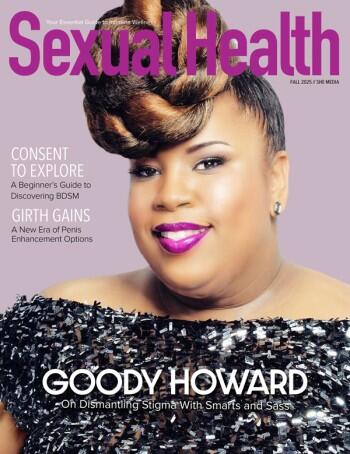There are as many body types in the world as there are people. Every single body is unique. Truly reflecting your customers therefore requires a commitment to improving representation.
The issue of representation manifests in big ways as well as smaller, more insipid ways. For example, brands with smaller marketing budgets or on tight campaign deadlines can’t always conceptualize and execute their own photo shoots every time. They may occasionally have to rely on stock photography just to get a campaign across the line. That’s understandable, and sometimes even necessary, but it’s a shortcut that comes at a cost: Stock photography tends to be heteronormative, and to showcase body types that reflect antiquated standards. That is to say, it usually depicts slim, white, straight-presenting models.
In the past, the pleasure products industry has often perpetuated stigmas and stereotypes. As the sector has advanced and become more mainstream, however, we have come to recognize that even beyond the obvious inequities of underrepresentation, creating and branding products that serve all genders and identities requires amplifying diverse, marginalized voices. Just as safety is fundamentally important in our industry, so is inclusivity and making sexual wellness products accessible to people of color, people who are socioeconomically oppressed, and LGBTQ+ people. Showing marginalized people that they are welcome should be at the forefront of our mission — and good representation is a key component of achieving that.
So, how do we actually do that?
Make Storytelling Central
Ensure that your commitment to diverse body types and lived experiences extends behind the camera too. The goal is not just putting diverse body types in front of the lens, but also working with diverse people to ensure they have the opportunity to actually tell their stories.
Once you start considering your creative work as an opportunity to platform alternative perspectives instead of a tick in a diversity box, you’ll immediately find the quality of your output improves. Similarly, all of our educational material is written from a first-person perspective to ensure safe, professional, empathetic education.
Depict Personality
One of the challenges of inclusive photography is that, by definition, a photograph can only focus on the visual aspects of diversity. That means it is crucial to make sure brand photography is doing a good job of truly creating an authentic depiction not just of a model’s physicality, but of their personality too. That takes practice, creativity and experience, but if you’re committed to better representation, this kind of work is its own reward, both ethically and financially.
Be Conscious About Model Selection
Choosing models is often the hardest part of prepping for a shoot. Since people of non-mainstream backgrounds have fewer opportunities, and therefore often have less professional experience on photography sets than more “conventional” models, it is extra-crucial to build relationships and create a space where everybody feels comfortable.
Sometimes there are people in our own personal networks that we can approach, and over time we learn through intuition who is going to be confident on set. That is especially true if we have existing relationships with them. Where that is not possible, make sure you are working with modeling and casting agencies that put the same emphasis on inclusivity as you do. These intersectional agencies are increasingly common, to the point where there’s no longer any excuse not to do it well.
Recognize Why You’re Striving to Be Inclusive
The ethical reasons why good representation should be your goal need no explanation here, but there are other reasons you might not have considered. Those reasons can be useful for explaining your creative direction to those in your business who are less familiar with issues relating to identity.
There are now numerous marketing studies demonstrating the power of inclusivity. Some 43% of American consumers view brands more positively when they take an activist stance. Positive brand perception leads directly to brand loyalty. When your representation is good, and your photography includes a broad depiction of body types and lived experiences, people are more likely to become customers, and then more likely to stay customers. When a customer connects with what a brand has to say about social issues, their decision to purchase is increasingly coming down to the brand’s willingness to take a stance.
In other words, taking a more inclusive approach to brand photography is not just good for communities and good for sexual wellness, but good for growing your business too. There’s just no reason not to be doing better.
Lindsay Wynn is the founder of and CEO Momotaro Apotheca, an organic vaginal wellness line that organically addresses issues and discomfort surrounding BV, Yeast Infections, UTIs and more. Momotaro Apotheca is sold globally and has been featured in publications such as Vogue, Forbes, Byrdie, Buzzfeed and more.








